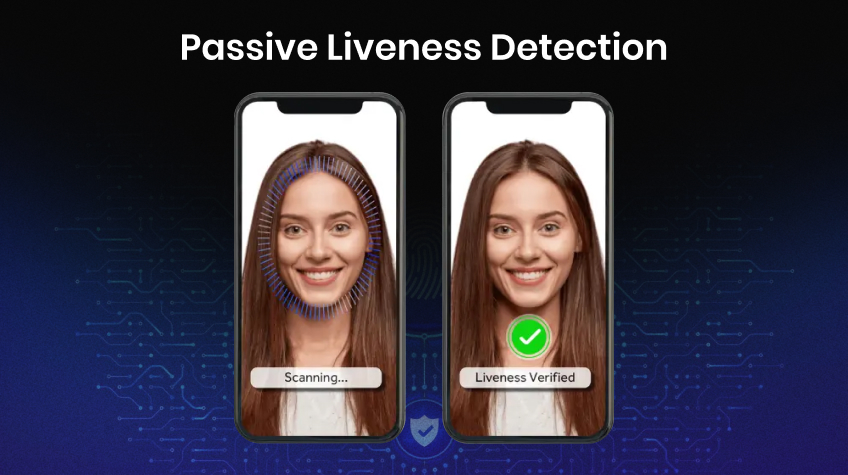
Passive liveness detection is a process that verifies the live presence of an individual in front of a camera. It detects the spoof without notifying the targeted person and he doesn’t need to make any specific movements for the verification. In other words, it is a passive verification of a person and evaluates only the natural movements.
Besides, liveness detection is a technology that is being used in smartphones, financial institutions, access control, and several healthcare centers. Biometric systems incorporated with passive liveness detection can add an extra layer of security, especially in financial organizations like banks. Without the implementation of this technology, scammers can easily steal anyone’s identity and enter the premises.
Difference Between Active Liveness and Passive Liveness Verification
Active and passive liveness checks, both are types of liveness detection methods. There is a huge difference between both. Through integration with a vast range of biometric models, such as facial recognition, fingerprint scanning, and iris recognition, organizations can further strengthen their security frameworks while delivering an easy experience for users. Passive liveness verification is highly encouraged in places where high-level security is required such as banks and other financial institutions.
| Active Liveness Check | Passive Liveness Check |
|---|---|
| This process requires the user to make certain movements. | This process verifies without letting the user know that he is being tested. |
| It is comparatively a slow process. | It is a fast and convenient process. |
| It can make the user feel that it is an unnatural process. | It is more authentic and accurate because the whole process doesn’t need user interaction. |
| It asks the user to follow the prompts. | It is an automatic process to evaluate skin texture and natural motion. |
| It can frustrate the users when asked to do something. | It is a smooth and linear process. |
Multi-modal Biometric System and Passive Liveness Check
The advantages of this multi-modal system come from utilizing several modalities to improve the system’s authenticity. These systems’ passive liveness verification turns out to be very successful and known all over the world. For a more comprehensive approach to liveness verification, for example, fingerprint scanning and facial recognition can be combined to add extra, in fact, multiple layers of security.
In such a system, it is feasible to concurrently verify each sample’s authenticity using both modalities. Hackers find it more challenging to get around security measures with this multifaceted strategy. Furthermore, biometric data processing will be enhanced through the application of advanced analytics, resulting in faster and more precise liveness verification. In multi-modal systems, passive liveness provides extremely sophisticated biometric security.
Besides, businesses can benefit by using this detection method with biometric systems. By using this, they will be able to detect the spoof or a fraudster immediately. This entire system is designed to enhance security and build trust among the users in several institutions. Above all, it is beneficial in preventing fraud and scams in this digital era of technology.
Upcoming Trends of This Technology
This relates to the current technological trend since biometric verification technologies might as well develop into passive liveness detecting tools. To develop a more enhanced system of verification with precision, such future trends rely on artificial intelligence and machine learning. These tools examine vast amounts of biometric data to find trends and abnormalities that indicate spoofs.
Furthermore, improvements in sensors will make it possible to integrate passive liveness verification into general appliances like smartphones and perhaps wearable technologies. Because consumers still want comfort without security, engineers will need to create increasingly complex passive liveness c-+hecks for biometric verification to realize its potential.
The verification systems must be evolved because of the increased fraud rate in the world. The continuous advancements will make the users believe that they must stay away from frauds otherwise they will be detected via the biometric systems.
Conclusion
In an increasingly safe and fraud-proof procedure, a passive liveness check is essential and has to be incorporated into a variety of biometric models. Businesses can use modified techniques for different biometric modalities to create reliable systems that protect against spoofing attempts, deepfake detection, and provide a user-friendly environment.
As technology advances, new, efficient, and user-friendly biometric verification methods become available, making it even more urgent to implement these safeguards. This focus on passive biometric verification will improve a system’s performance and, first and foremost, encourage people to trust biometric technologies.






